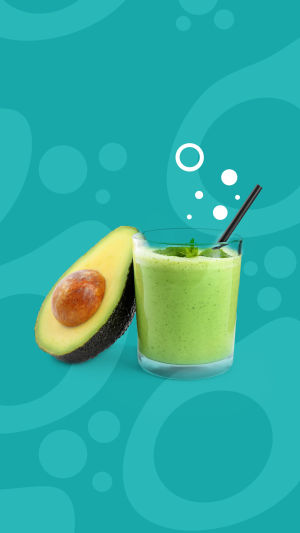Avocado has become a favorite fruit for fitness professionals, rich in nutritional value and high in fat, and low in carbohydrates compared to the foods consumed on a daily basis.
Avocados are indeed high in fat, with 100g of avocado containing around 15g of fat.
But note that this 15g of fat is a good quality natural fat, not the same as the trans fats found in your usual snack foods like cakes, biscuits, and Chips! The fat in avocados is 71% monounsaturated, 13% polyunsaturated and 16% saturated.
Most of these monounsaturated fatty acids are oleic acids (omega-9). A food that also contains high levels of oleic acid is olive oil, which is known for its health benefits.
Oleic acid is anti-inflammatory and has potential therapeutic effects in infections, inflammation, immunity, cardiovascular disease, and skin repair.
In addition, the fat in avocados enhances the absorption of fat-soluble nutrients. Avocado is extremely low in absorbable carbohydrates. The carbohydrate content is 8.64, with 6.8g/100g of dietary fibre, the proportion of insoluble fibre is about 70% and the proportion of soluble fibre is 30%.
Insoluble fibre can speed up the passage of food through the digestive tract, promote intestinal peristalsis and maintain intestinal regularity. It also increases the volume of faeces, helps the intestines to expel waste products such as food residues, prevents inflammation of the intestines (diverticulitis) and treats constipation.
The soluble fibres in avocado, on the other hand, are a favourite food of the intestinal flora. These soluble fibres can be fermented in the large intestine, providing a large number of nutrients to the intestinal flora.
Rich in dietary fibre, avocados can prevent intestinal disorders.
So how should avocados be used?
1. Direct consumption
Wash the avocado, remove the skin and core, and cut it into small pieces and you can eat it directly, pay attention to the delicate taste, the first time you eat may not be too accustomed to oh.
2. Make a salad
Cut the avocado into 1 cm cubes and serve with peas, corn and your favourite vegetables (e.g. blanched broccoli, cucumber, tomatoes, etc.), then toss with dressing or tomato sauce for a delicious and healthy avocado salad!
3. Spread on slices of bread
Split the avocado open, spoon it up and spread it as a jam on slices of bread, then add strawberry jam or honey for a nice texture. This is very easy, convenient and sweet.
4. Milkshake
Put the avocado with the right milk or yoghurt and honey into a blender and blend it into a milkshake, a favourite with children and young people.
A good avocado tastes better. When selecting an avocado, you can look at the color of the avocado's skin, generally speaking, the darker the color, the better the quality of the avocado.
You can also look at the skin of the avocado, if the avocado skin is relatively rough, then it means that the quality of such avocados is generally better.





